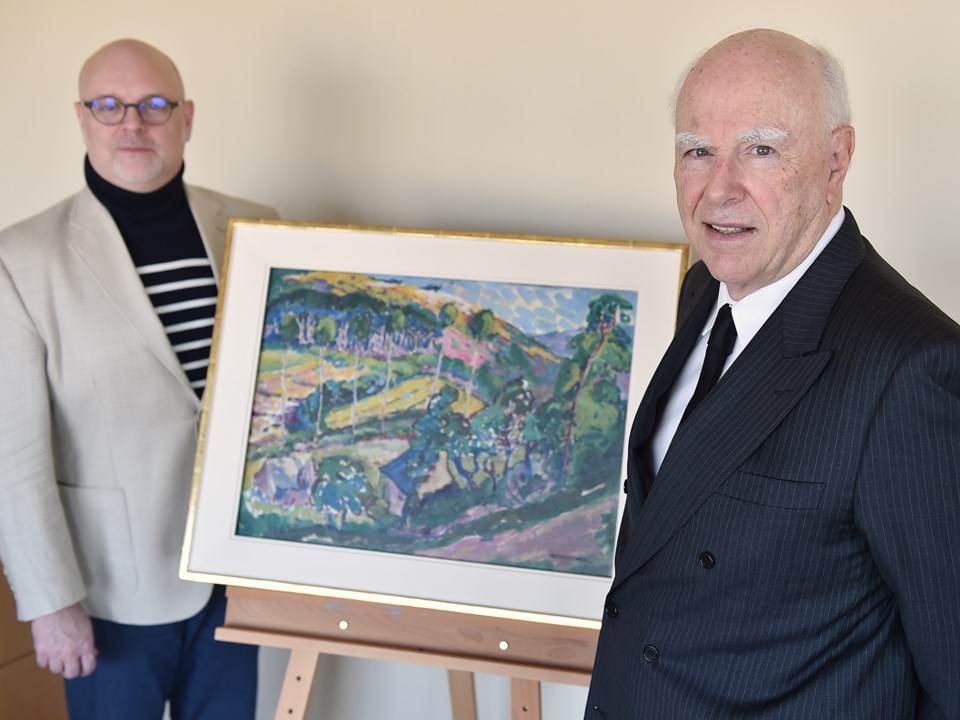It’s considered to be one of the most important paintings of Emily Carr’s career.
The Audain Foundation, led by chairman Michael Audain, a prominent art collector and philanthropist, recently acquired “Le Paysage,” one of a few pieces Carr painted while she was studying in France in 1910 and 1911.
It will be on permanent display at the Audain Art Museum in Whistler.
While the exact sale price of the piece was not released, the foundation put up just under $1 million for the museum to acquire the painting from a private collector.
The oil-on-board piece was one of two paintings that were accepted for the 1911 Salon d’Automne at the Grand Palais, an annual art exhibition held in Paris since 1903. The other, “Autumn in France,” has been in the National Gallery of Canada’s collection since 1948.
Darrin Martens, chief curator at the Audain Art Museum, said the Salon d’Automne was “where the avant-garde artists of the time would put up their new paintings and would either be heralded or criticized.”
Carr’s paintings were displayed alongside other prominent artists of the time.
“It’s amazing to think that a virtually unknown artist from Victoria, B.C. had two paintings accepted by the jury of this prestigious exhibition, particularly given that works by women were so rare,” Audain said. “But, on this occasion, Emily Carr had two works up on the wall in the same company as great artist of the day — Bonnard, Braque, Leger, Matisse and Picasso.”
Before her time in France studying under Harry Gibb, Carr was part of the British watercolour tradition, which is more documentary in style, Martens said. This work signifies a departure from that traditional work that she was known for.
“She travelled to Paris as well as London to learn then what would be called the new art and to — like many of us today want to — expand our horizons and have new experiences,” he said. “She wanted to learn about colour and how colour could be used in a much more expressive way.”
However, her work did not receive a warm welcome when she returned home.
“It is tragic that when Emily Carr returned to Victoria with art, which reflected shades of French Impressionism, it provoked such ridicule that for a decade she virtually gave up painting,” Martens said. “Yet the acceptance of this picture by the Salon d’Automne is a testament that Carr had the potential of becoming an important artist even if she had never returned to our shores.”
“Le Paysage,” which later became known simply as “Brittany,” has only been displayed publically twice. Aside from the original exhibition at Salon d’Automne in 1911, it was also included in a large retrospective at the National Gallery of Canada in the 1990s. It was in a private collection until it was purchased by the Audain Foundation last week.
It will go on display at the Audain Art Museum in Whistler on Dec. 13, becoming part of the gallery’s permanent display of Carr’s work, which is currently the largest in the country. “Le Paysage” will also serve as a centrepiece for an upcoming exhibit, Emily Carr in France, which will be revealed to the public in May 2019.
Opened in 2016, the museum houses a large portion of the art collection amassed by Audain and his wife Yoshiko Karasawa over the last 40 years.


